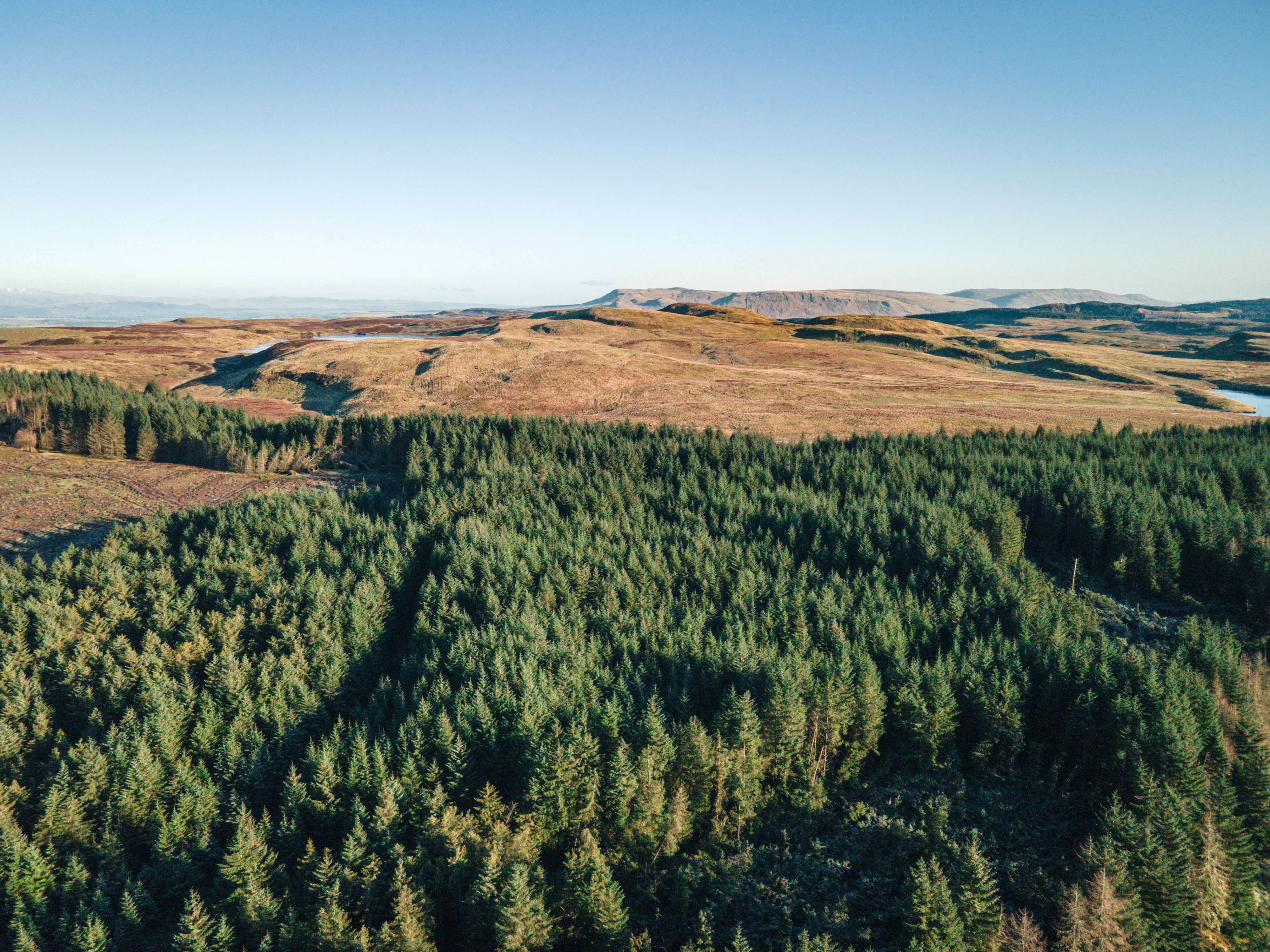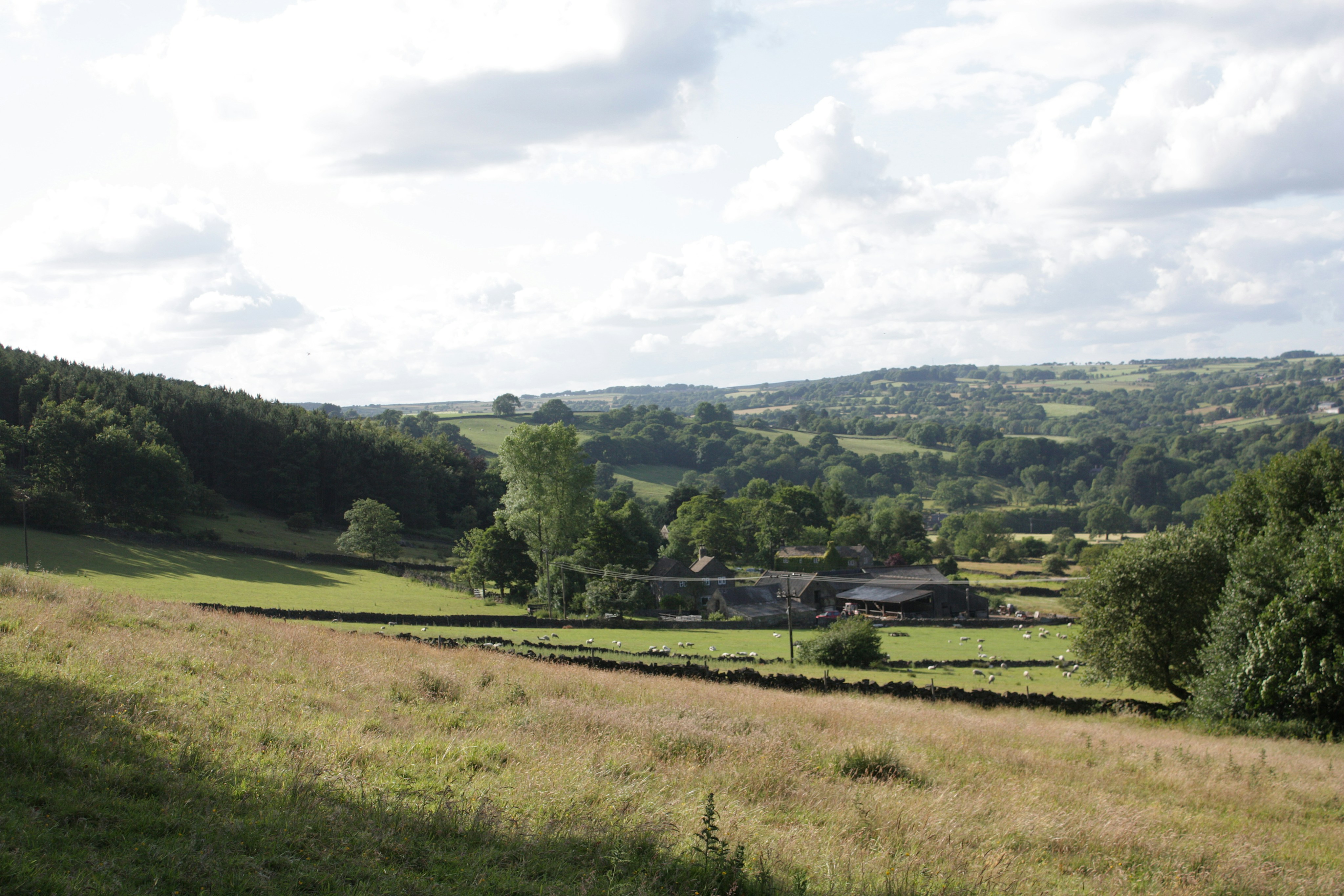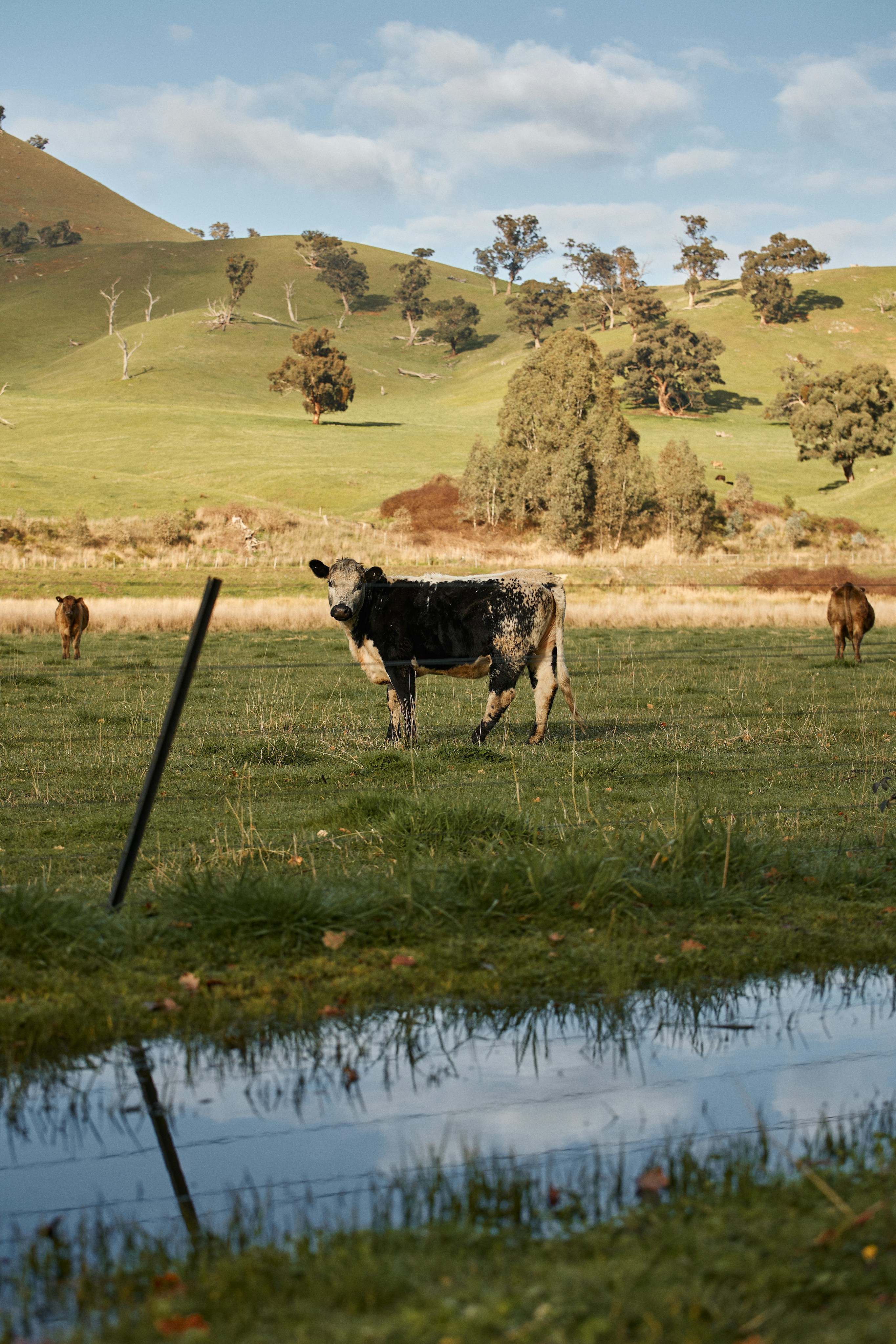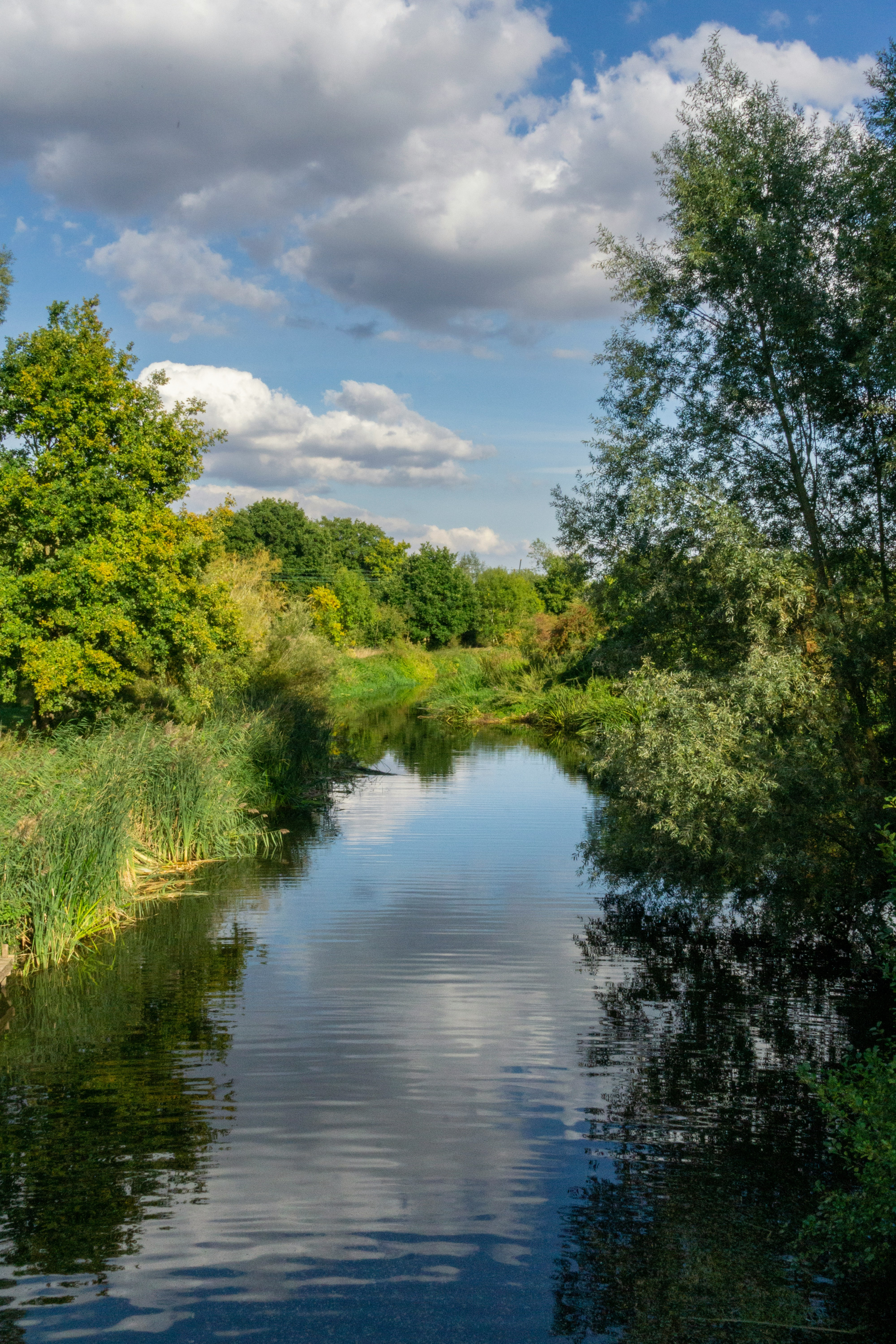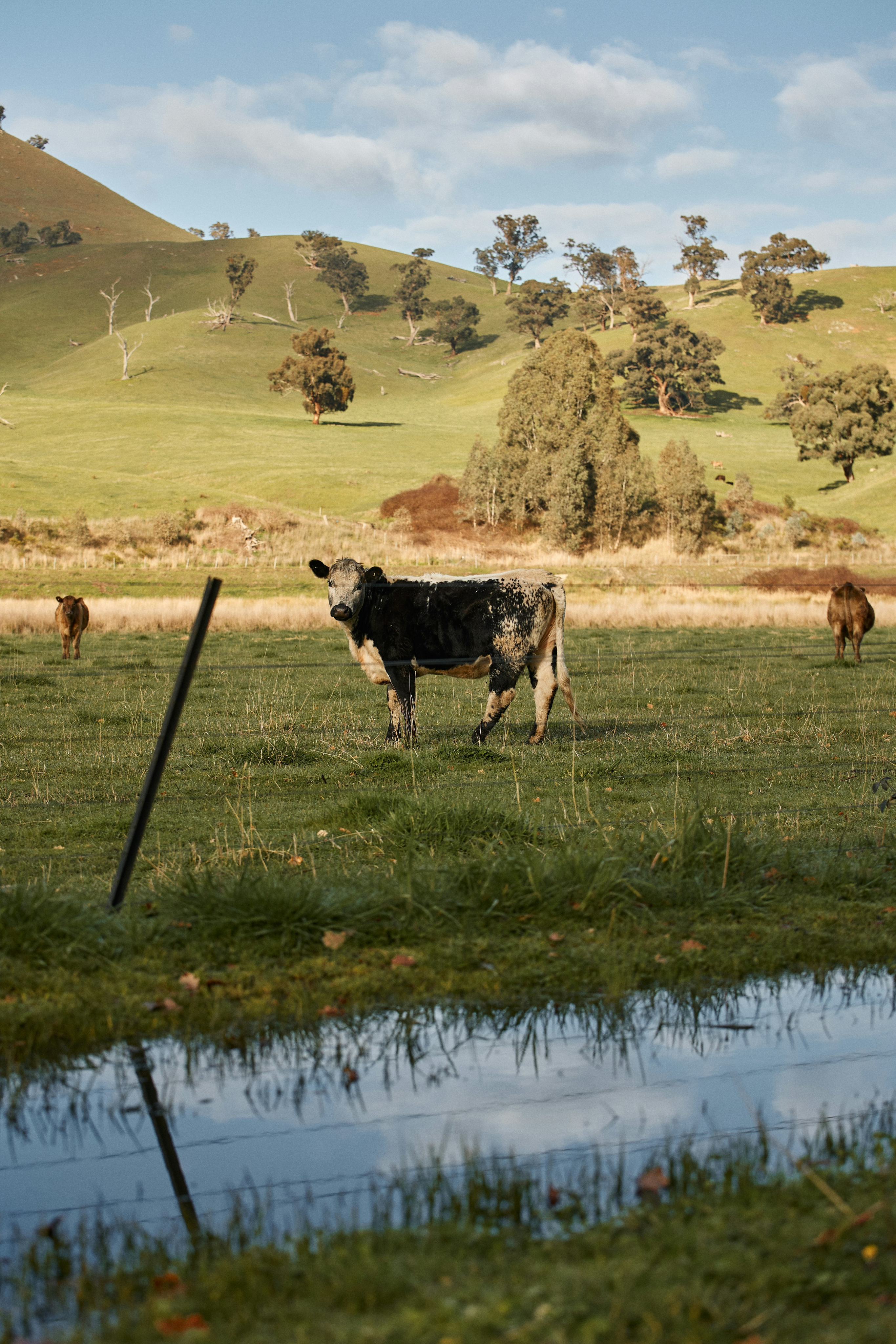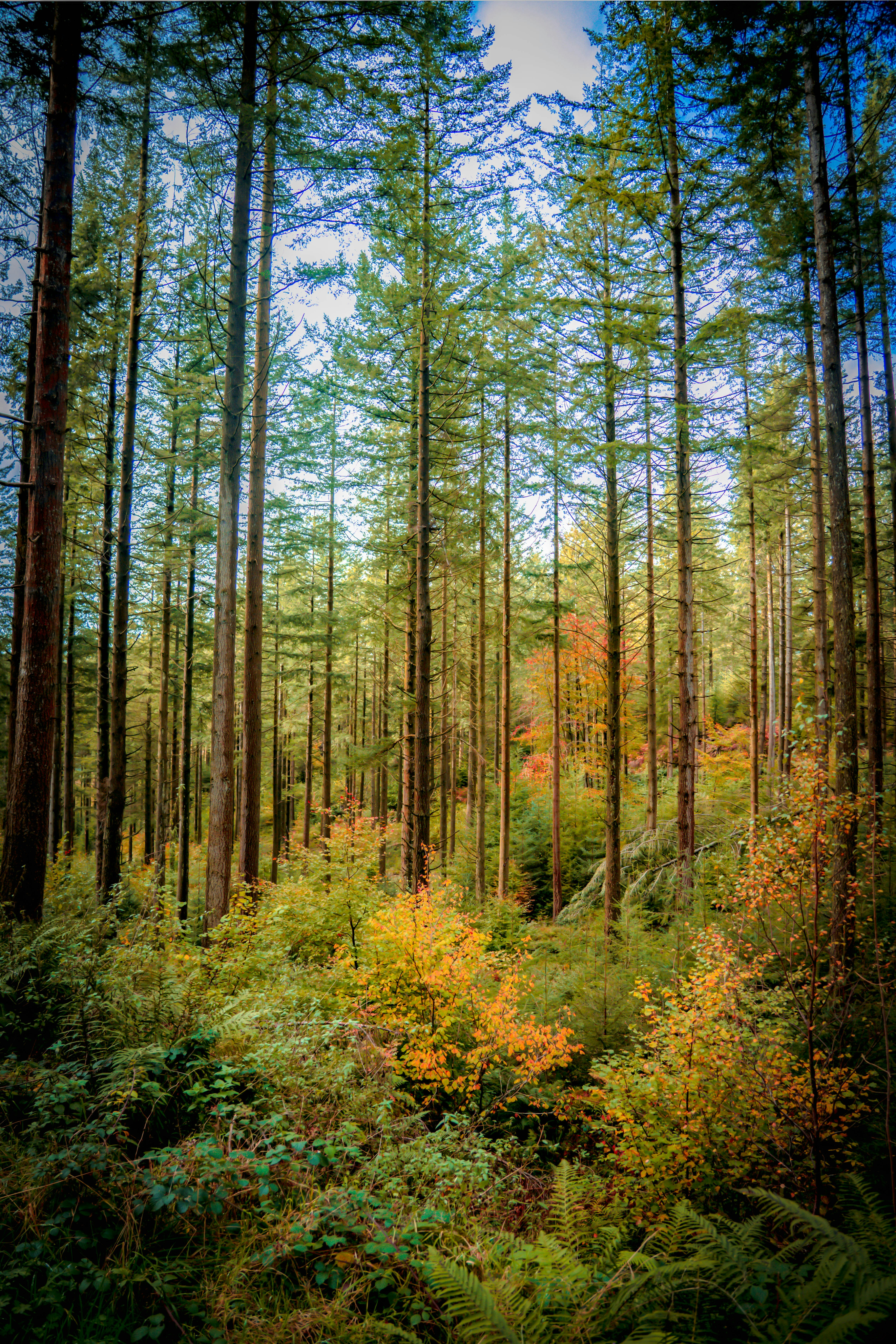The contents of this document should not be perceived as investment advice.

How to allocate natural capital to your portfolio
Contents
Defining natural capital’s role in your portfolio
Before committing capital to natural assets, institutions should define the strategic role these investments will serve in the portfolio. Clear objectives at the outset guide asset selection, structuring, risk management, and reporting frameworks. Key considerations include:
Risk-adjusted returns
Are you looking for long-term performance through uncorrelated, stable return streams tied to real assets and biological growth?
Store of value
Do you want to have assets that have historically held value in real terms across market cycles, using land-based assets that maintain purchasing power and resist drawdown risk?
Returns profile
Are you aiming to generate steady income from operational land use (e.g. rents, harvests), supporting cashflow needs or rebalancing targets?
Positive climate and nature impact
Is your goal to meet sustainability targets by investing in assets that aim to restore ecosystems or reduce environmental harm?
Resilience to environmental risk
Do you need to hedge systemic exposure to climate and nature-related risks by building a more climate resilient portfolio?
Risk exposure
Are you comfortable with exposure to yield volatility, resource scarcity, policy shifts or dependence on immature markets?
Natural capital strategies can serve multiple institutional priorities. Clarifying your core objective informs how allocations are sized, structured, and evaluated, determining the types of strategies, managers, and jurisdictions that are most appropriate.
Clear answers help position natural capital within the existing asset mix, and support long-term integration across mandates, governance and performance management.
Ask yourself
Are you return-led, impact-aligned, or impact-led?
Are you looking for nature-positive or net-zero allocations?
Do you need to meet regulatory requirements, hedge climate risk, or support the transition of your wider portfolio?
Matching strategies to objectives
Each vertical, sustainable agriculture, sustainable forestry and, nature-based solutions, has a distinct profile in terms of return structure, scalability, liquidity and environmental outcome. Matching strategy to objective helps guide the right balance between core income, capital growth and, climate or biodiversity impact.
Evaluating opportunities
Once strategic fit is established, individual investments should be evaluated against eight key criteria:
Returns profile
What is the balance between income and appreciation?
Time horizon
The length of time capital is expected to be tied up before returns are realised.
Scalability
The ability to deploy large amounts of capital efficiently without compromising returns, risk, or operational capacity.
Regulatory risk
Are returns supported by stable policy or market infrastructure?
Transition/climate risk
An asset’s resilience to physical climate hazards such as drought, fire, or flooding, and its alignment with the transition to a low-carbon, climate-resilient economy.
Liquidity
How easily the investment can be exited without a significant loss in value.
Offtake profile
Strength and reliability of revenue channels (e.g. credit markets, timber buyers, commodity processors).
Operational complexity
What internal capacity or local expertise is required?
Example Investments

Sustainable agriculture
01
Buy & lease: row crops, Illinois
Purchase high-quality farmland and lease it to experienced row crop operators. Generates stable income through rental payments with minimal management or operational involvement.
Risk-adjusted returns
This strategy has historically delivered the highest risk-adjusted returns of natural capital. Income is secured through leases on high-quality farmland with established tenant markets and durable demand.
Store of value
Farmland materially enhances portfolio resilience during crises and has historically shown exceptional stability, with benchmarks recording average annual drawdowns of just 1.4% and volatility below 7% (NCREIF, 1995–2024).
Returns profile
Annual lease payments of approximately 3.8% from experienced operators provide predictable income with minimal active management required (NCREIF, 1995–2024).
Positive climate / nature impact
Environmental performance assured through certified practices and sustainable land management, including soil restoration, biodiversity improvements, and carbon reductions.
Resilience to environmental risk
While farmland is exposed to climate impacts on productivity and yields, it has shown resilience and adaptive capacity, with some regions positioned to benefit from shifting patterns.
Risk exposure
Risk is negligible, with tenant obligations typically prepaid or secured through bank guarantees.
02
Regenerative almond orchard, Spain
Acquire high-quality farmland to develop and operate a regenerative almond orchard. Returns are generated through operating income from annual almond sales and underlying land price appreciation.
Risk-adjusted returns
Permanent crops have a strong track record of risk-adjusted returns. Income comes from crop sales, with orchards delivering high yields. Most returns derive from this income stream once production is established.
Store of value
Farmland enhances portfolio resilience during crises and has historically demonstrated exceptional stability, with benchmarks recording average annual drawdowns of just 1.4% and volatility below 7% (NCREIF, 1995–2024).
Returns profile
Returns are primarily driven by annual cash yields, while capital appreciation is more muted due to the depreciation of biological assets partially offsetting land value gains.
Positive climate / nature impact
Environmental performance assured through certified practices and sustainable management, including soil restoration, biodiversity enhancement, and carbon reduction.
Resilience to environmental risk
Although exposed to climate impacts on productivity and yields, farmland has shown resilience and adaptive capacity, with some regions benefiting from shifting conditions.
Risk exposure
Risk is moderate, reflecting exposure to operational execution challenges, input cost variability, and fluctuating commodity prices.
Sustainable forestry
03
Afforestation project, Australia
Acquire underutilised bare land and establish new forests with a mix of native and commercial tree species. Returns are supported by public grants and future revenue potential from timber and/or carbon credits.
Risk-adjusted returns
Forestry has historically delivered strong risk-adjusted returns. Long-term value is underpinned by biological growth, predictable timber harvest revenues and the growing potential for carbon credit income.
Store of value
Forestry enhances portfolio resilience during periods of market stress and has demonstrated strong stability over time (see pages 12 and 14).
Returns profile
Returns are primarily driven by underlying land value appreciation and biological growth, with revenues typically realised through timber sales, carbon credit sales, or both.
Positive climate / nature impact
Environmental performance assured through certified forestry and sustainable management, including carbon sequestration, soil restoration, and biodiversity enhancement.
Resilience to environmental risk
Although forestry is exposed to climate-related impacts on productivity and yields, it has demonstrated long-term resilience and adaptive capacity to shifting climate conditions.
Risk exposure
Risk is low, with limited exposure to operational execution challenges and fluctuating commodity prices.
04
Continuous cover forestry (CCF), United Kingdom
Work in partnership with landowners to create diverse woodlands under certification standards. Timber is harvested periodically while maintaining ecological function and long-term productivity.
Risk-adjusted returns
Forestry has historically delivered strong risk-adjusted returns. CCF offers a stabilised forestry asset, with a strong carbon credit income.
Store of value
Forestry enhances portfolio resilience during crises and has historically shown exceptional stability, with benchmarks recording average annual drawdowns of 19.8% and volatility below 12.6% (NCREIF, 1995–2024).
Returns profile
Returns are driven by growing value of stabilising timber asset and biological growth, with revenues typically realised both through timber sales and carbon credit sales.
Positive climate / nature impact
Environmental performance assured through natural regeneration and sustainable management, including carbon sequestration, soil restoration, and biodiversity enhancement.
Resilience to environmental risk
Although forestry is exposed to climate-related impacts on productivity and yields, policy is shifting to support diverse, stable CCF woodlands as the most climate-resilient forestry approach.
Risk exposure
Risk is medium-low, with uncertainty in carbon markets underpinned by a productive forestry asset.
Nature based solutions
05
River catchment restoration, England
Finance integrated catchment projects (wetlands, riparian planting, habitat restoration, leaky dams, nutrient ponds) to improve water quality, cut flood risk, boost biodiversity, and build climate resilience.
Risk-adjusted returns
Emerging revenue models (ecosystem service payments or blended finance). The market is developing, with growing use of outcome-based contracts alongside grant funding.
Store of value
Restored land may appreciate as demand for ecosystem services grows, but resale is subject to the demand for these services and any land-use constraints.
Returns profile
Income comes from milestone or outcome-based payments tied to water quality or biodiversity targets, with some pilots testing new models.
Positive climate / nature impact
Environmental performance is assured through certified ecological practices that improve water quality, reduce flood risk, increase ecosystem resilience, and enhance biodiversity.
Resilience to environmental risk
Nature-based measures help mitigate climate-related risks and support regulatory and community priorities for long-term resilience.
Risk exposure
Uncertainty remains due to immature markets and the complexity of delivering outcomes across large, multi-stakeholder landscapes, and potential regulatory shifts.
06
Marine restoration, England
Restoration of marine ecosystems (e.g. oyster reefs, seaweed, kelp) delivering ecosystem services such as clean water, carbon storage, habitat creation, and reduced coastal erosion. Revenues generated through outcomes-based payments, water bonds, and blue carbon credits, with potential for stacked income streams.
Risk-adjusted returns
Revenues are contracted against measurable ecological outcomes, providing long-term stability and alignment with environmental performance.
Store of value
Maturing reefs enhance ecosystem services and natural capital value over time, supporting long-term resilience and asset stability.
Returns profile
Stable income expected from offtake agreements and outcome-based contracts, with potential diversification through stacked revenue streams.
Positive climate / nature impact
Restores ecosystems, supports biodiversity, and sustains long-term ecological health through natural regeneration and habitat restoration.
Resilience to environmental risk
Mitigates risks for coastal assets, fisheries, and companies dependent on clean water, while supporting adaptation to shifting climate conditions.
Risk exposure
Execution and delivery risks remain material, alongside potential uncertainty in scaling outcome-based financing mechanisms and regulatory support.
The contents of this document should not be perceived as investment advice.
How to allocate natural capital to your portfolio

Contents
Defining natural capital’s role in your portfolio
Before committing capital to natural assets, institutions should define the strategic role these investments will serve in the portfolio. Clear objectives at the outset guide asset selection, structuring, risk management, and reporting frameworks. Key considerations include:
Risk-adjusted returns
Are you looking for long-term performance through uncorrelated, stable return streams tied to real assets and biological growth?
Store of value
Do you want to have assets that have historically held value in real terms across market cycles, using land-based assets that maintain purchasing power and resist drawdown risk?
Returns profile
Are you aiming to generate steady income from operational land use (e.g. rents, harvests), supporting cashflow needs or rebalancing targets?
Positive climate and nature impact
Is your goal to meet sustainability targets by investing in assets that aim to restore ecosystems or reduce environmental harm?
Resilience to environmental risk
Do you need to hedge systemic exposure to climate and nature-related risks by building a more climate resilient portfolio?
Risk exposure
Are you comfortable with exposure to yield volatility, resource scarcity, policy shifts or dependence on immature markets?
Natural capital strategies can serve multiple institutional priorities. Clarifying your core objective informs how allocations are sized, structured, and evaluated, determining the types of strategies, managers, and jurisdictions that are most appropriate.
Clear answers help position natural capital within the existing asset mix, and support long-term integration across mandates, governance and performance management.
Ask yourself
Are you return-led, impact-aligned, or impact-led?
Are you looking for nature-positive or net-zero allocations?
Do you need to meet regulatory requirements, hedge climate risk, or support the transition of your wider portfolio?
Matching strategies to objectives
Each vertical, sustainable agriculture, sustainable forestry and, nature-based solutions, has a distinct profile in terms of return structure, scalability, liquidity and environmental outcome. Matching strategy to objective helps guide the right balance between core income, capital growth and, climate or biodiversity impact.
Evaluating opportunities
Once strategic fit is established, individual investments should be evaluated against eight key criteria:
Returns profile
What is the balance between income and appreciation?
Time horizon
The length of time capital is expected to be tied up before returns are realised.
Scalability
The ability to deploy large amounts of capital efficiently without compromising returns, risk, or operational capacity.
Regulatory risk
Are returns supported by stable policy or market infrastructure?
Transition/climate risk
An asset’s resilience to physical climate hazards such as drought, fire, or flooding, and its alignment with the transition to a low-carbon, climate-resilient economy.
Liquidity
How easily the investment can be exited without a significant loss in value.
Offtake profile
Strength and reliability of revenue channels (e.g. credit markets, timber buyers, commodity processors).
Operational complexity
What internal capacity or local expertise is required?
Example Investments
Sustainable agriculture
01
Buy & lease: row crops, Illinois
Purchase high-quality farmland and lease it to experienced row crop operators. Generates stable income through rental payments with minimal management or operational involvement.
Risk-adjusted returns
This strategy has historically delivered the highest risk-adjusted returns of natural capital. Income is secured through leases on high-quality farmland with established tenant markets and durable demand.
Store of value
Farmland materially enhances portfolio resilience during crises and has historically shown exceptional stability, with benchmarks recording average annual drawdowns of just 1.4% and volatility below 7% (NCREIF, 1995–2024).
Returns profile
Annual lease payments of approximately 3.8% from experienced operators provide predictable income with minimal active management required (NCREIF, 1995–2024).
Positive climate / nature impact
Environmental performance assured through certified practices and sustainable land management, including soil restoration, biodiversity improvements, and carbon reductions.
Resilience to environmental risk
While farmland is exposed to climate impacts on productivity and yields, it has shown resilience and adaptive capacity, with some regions positioned to benefit from shifting patterns.
Risk exposure
Risk is negligible, with tenant obligations typically prepaid or secured through bank guarantees.
02
Regenerative almond orchard, Spain
Acquire high-quality farmland to develop and operate a regenerative almond orchard. Returns are generated through operating income from annual almond sales and underlying land price appreciation.
Risk-adjusted returns
Permanent crops have a strong track record of risk-adjusted returns. Income comes from crop sales, with orchards delivering high yields. Most returns derive from this income stream once production is established.
Store of value
Farmland enhances portfolio resilience during crises and has historically demonstrated exceptional stability, with benchmarks recording average annual drawdowns of just 1.4% and volatility below 7% (NCREIF, 1995–2024).
Returns profile
Returns are primarily driven by annual cash yields, while capital appreciation is more muted due to the depreciation of biological assets partially offsetting land value gains.
Positive climate / nature impact
Environmental performance assured through certified practices and sustainable management, including soil restoration, biodiversity enhancement, and carbon reduction.
Resilience to environmental risk
Although exposed to climate impacts on productivity and yields, farmland has shown resilience and adaptive capacity, with some regions benefiting from shifting conditions.
Risk exposure
Risk is moderate, reflecting exposure to operational execution challenges, input cost variability, and fluctuating commodity prices.
Sustainable forestry
03
Afforestation project, Australia
Acquire underutilised bare land and establish new forests with a mix of native and commercial tree species. Returns are supported by public grants and future revenue potential from timber and/or carbon credits.
Risk-adjusted returns
Forestry has historically delivered strong risk-adjusted returns. Long-term value is underpinned by biological growth, predictable timber harvest revenues and the growing potential for carbon credit income.
Store of value
Forestry enhances portfolio resilience during periods of market stress and has demonstrated strong stability over time (see pages 12 and 14).
Returns profile
Returns are primarily driven by underlying land value appreciation and biological growth, with revenues typically realised through timber sales, carbon credit sales, or both.
Positive climate / nature impact
Environmental performance assured through certified forestry and sustainable management, including carbon sequestration, soil restoration, and biodiversity enhancement.
Resilience to environmental risk
Although forestry is exposed to climate-related impacts on productivity and yields, it has demonstrated long-term resilience and adaptive capacity to shifting climate conditions.
Risk exposure
Risk is low, with limited exposure to operational execution challenges and fluctuating commodity prices.
04
Continuous cover forestry (CCF), United Kingdom
Work in partnership with landowners to create diverse woodlands under certification standards. Timber is harvested periodically while maintaining ecological function and long-term productivity.
Risk-adjusted returns
Forestry has historically delivered strong risk-adjusted returns. CCF offers a stabilised forestry asset, with a strong carbon credit income.
Store of value
Forestry enhances portfolio resilience during crises and has historically shown exceptional stability, with benchmarks recording average annual drawdowns of 19.8% and volatility below 12.6% (NCREIF, 1995–2024).
Returns profile
Returns are driven by growing value of stabilising timber asset and biological growth, with revenues typically realised both through timber sales and carbon credit sales.
Positive climate / nature impact
Environmental performance assured through natural regeneration and sustainable management, including carbon sequestration, soil restoration, and biodiversity enhancement.
Resilience to environmental risk
Although forestry is exposed to climate-related impacts on productivity and yields, policy is shifting to support diverse, stable CCF woodlands as the most climate-resilient forestry approach.
Risk exposure
Risk is medium-low, with uncertainty in carbon markets underpinned by a productive forestry asset.
Nature based solutions
05
River catchment restoration, England
Finance integrated catchment projects (wetlands, riparian planting, habitat restoration, leaky dams, nutrient ponds) to improve water quality, cut flood risk, boost biodiversity, and build climate resilience.
Risk-adjusted returns
Emerging revenue models (ecosystem service payments or blended finance). The market is developing, with growing use of outcome-based contracts alongside grant funding.
Store of value
Restored land may appreciate as demand for ecosystem services grows, but resale is subject to the demand for these services and any land-use constraints.
Returns profile
Income comes from milestone or outcome-based payments tied to water quality or biodiversity targets, with some pilots testing new models.
Positive climate / nature impact
Environmental performance is assured through certified ecological practices that improve water quality, reduce flood risk, increase ecosystem resilience, and enhance biodiversity.
Resilience to environmental risk
Nature-based measures help mitigate climate-related risks and support regulatory and community priorities for long-term resilience.
Risk exposure
Uncertainty remains due to immature markets and the complexity of delivering outcomes across large, multi-stakeholder landscapes, and potential regulatory shifts.
06
Marine restoration, England
Restoration of marine ecosystems (e.g. oyster reefs, seaweed, kelp) delivering ecosystem services such as clean water, carbon storage, habitat creation, and reduced coastal erosion. Revenues generated through outcomes-based payments, water bonds, and blue carbon credits, with potential for stacked income streams.
Risk-adjusted returns
Revenues are contracted against measurable ecological outcomes, providing long-term stability and alignment with environmental performance.
Store of value
Maturing reefs enhance ecosystem services and natural capital value over time, supporting long-term resilience and asset stability.
Returns profile
Stable income expected from offtake agreements and outcome-based contracts, with potential diversification through stacked revenue streams.
Positive climate / nature impact
Restores ecosystems, supports biodiversity, and sustains long-term ecological health through natural regeneration and habitat restoration.
Resilience to environmental risk
Mitigates risks for coastal assets, fisheries, and companies dependent on clean water, while supporting adaptation to shifting climate conditions.
Risk exposure
Execution and delivery risks remain material, alongside potential uncertainty in scaling outcome-based financing mechanisms and regulatory support.
The contents of this document should not be perceived as investment advice.
How to allocate natural capital to your portfolio

Contents
Defining natural capital’s role in your portfolio
Before committing capital to natural assets, institutions should define the strategic role these investments will serve in the portfolio. Clear objectives at the outset guide asset selection, structuring, risk management, and reporting frameworks. Key considerations include:
Risk-adjusted returns
Are you looking for long-term performance through uncorrelated, stable return streams tied to real assets and biological growth?
Store of value
Do you want to have assets that have historically held value in real terms across market cycles, using land-based assets that maintain purchasing power and resist drawdown risk?
Returns profile
Are you aiming to generate steady income from operational land use (e.g. rents, harvests), supporting cashflow needs or rebalancing targets?
Positive climate and nature impact
Is your goal to meet sustainability targets by investing in assets that aim to restore ecosystems or reduce environmental harm?
Resilience to environmental risk
Do you need to hedge systemic exposure to climate and nature-related risks by building a more climate resilient portfolio?
Risk exposure
Are you comfortable with exposure to yield volatility, resource scarcity, policy shifts or dependence on immature markets?
Natural capital strategies can serve multiple institutional priorities. Clarifying your core objective informs how allocations are sized, structured, and evaluated, determining the types of strategies, managers, and jurisdictions that are most appropriate.
Clear answers help position natural capital within the existing asset mix, and support long-term integration across mandates, governance and performance management.
Ask yourself
Are you return-led, impact-aligned, or impact-led?
Are you looking for nature-positive or net-zero allocations?
Do you need to meet regulatory requirements, hedge climate risk, or support the transition of your wider portfolio?
Matching strategies to objectives
Each vertical, sustainable agriculture, sustainable forestry and, nature-based solutions, has a distinct profile in terms of return structure, scalability, liquidity and environmental outcome. Matching strategy to objective helps guide the right balance between core income, capital growth and, climate or biodiversity impact.
Evaluating opportunities
Once strategic fit is established, individual investments should be evaluated against eight key criteria:
Returns profile
What is the balance between income and appreciation?
Time horizon
The length of time capital is expected to be tied up before returns are realised.
Scalability
The ability to deploy large amounts of capital efficiently without compromising returns, risk, or operational capacity.
Regulatory risk
Are returns supported by stable policy or market infrastructure?
Transition/climate risk
An asset’s resilience to physical climate hazards such as drought, fire, or flooding, and its alignment with the transition to a low-carbon, climate-resilient economy.
Liquidity
How easily the investment can be exited without a significant loss in value.
Offtake profile
Strength and reliability of revenue channels (e.g. credit markets, timber buyers, commodity processors).
Operational complexity
What internal capacity or local expertise is required?
Example Investments

Sustainable agriculture
01
Buy & lease: row crops, Illinois
Purchase high-quality farmland and lease it to experienced row crop operators. Generates stable income through rental payments with minimal management or operational involvement.
Risk-adjusted returns
This strategy has historically delivered the highest risk-adjusted returns of natural capital. Income is secured through leases on high-quality farmland with established tenant markets and durable demand.
Store of value
Farmland materially enhances portfolio resilience during crises and has historically shown exceptional stability, with benchmarks recording average annual drawdowns of just 1.4% and volatility below 7% (NCREIF, 1995–2024).
Returns profile
Annual lease payments of approximately 3.8% from experienced operators provide predictable income with minimal active management required (NCREIF, 1995–2024).
Positive climate / nature impact
Environmental performance assured through certified practices and sustainable land management, including soil restoration, biodiversity improvements, and carbon reductions.
Resilience to environmental risk
While farmland is exposed to climate impacts on productivity and yields, it has shown resilience and adaptive capacity, with some regions positioned to benefit from shifting patterns.
Risk exposure
Risk is negligible, with tenant obligations typically prepaid or secured through bank guarantees.
02
Regenerative almond orchard, Spain
Acquire high-quality farmland to develop and operate a regenerative almond orchard. Returns are generated through operating income from annual almond sales and underlying land price appreciation.
Risk-adjusted returns
Permanent crops have a strong track record of risk-adjusted returns. Income comes from crop sales, with orchards delivering high yields. Most returns derive from this income stream once production is established.
Store of value
Farmland enhances portfolio resilience during crises and has historically demonstrated exceptional stability, with benchmarks recording average annual drawdowns of just 1.4% and volatility below 7% (NCREIF, 1995–2024).
Returns profile
Returns are primarily driven by annual cash yields, while capital appreciation is more muted due to the depreciation of biological assets partially offsetting land value gains.
Positive climate / nature impact
Environmental performance assured through certified practices and sustainable management, including soil restoration, biodiversity enhancement, and carbon reduction.
Resilience to environmental risk
Although exposed to climate impacts on productivity and yields, farmland has shown resilience and adaptive capacity, with some regions benefiting from shifting conditions.
Risk exposure
Risk is moderate, reflecting exposure to operational execution challenges, input cost variability, and fluctuating commodity prices.
Sustainable forestry
03
Afforestation project, Australia
Acquire underutilised bare land and establish new forests with a mix of native and commercial tree species. Returns are supported by public grants and future revenue potential from timber and/or carbon credits.
Risk-adjusted returns
Forestry has historically delivered strong risk-adjusted returns. Long-term value is underpinned by biological growth, predictable timber harvest revenues and the growing potential for carbon credit income.
Store of value
Forestry enhances portfolio resilience during periods of market stress and has demonstrated strong stability over time (see pages 12 and 14).
Returns profile
Returns are primarily driven by underlying land value appreciation and biological growth, with revenues typically realised through timber sales, carbon credit sales, or both.
Positive climate / nature impact
Environmental performance assured through certified forestry and sustainable management, including carbon sequestration, soil restoration, and biodiversity enhancement.
Resilience to environmental risk
Although forestry is exposed to climate-related impacts on productivity and yields, it has demonstrated long-term resilience and adaptive capacity to shifting climate conditions.
Risk exposure
Risk is low, with limited exposure to operational execution challenges and fluctuating commodity prices.
04
Continuous cover forestry (CCF), United Kingdom
Work in partnership with landowners to create diverse woodlands under certification standards. Timber is harvested periodically while maintaining ecological function and long-term productivity.
Risk-adjusted returns
Forestry has historically delivered strong risk-adjusted returns. CCF offers a stabilised forestry asset, with a strong carbon credit income.
Store of value
Forestry enhances portfolio resilience during crises and has historically shown exceptional stability, with benchmarks recording average annual drawdowns of 19.8% and volatility below 12.6% (NCREIF, 1995–2024).
Returns profile
Returns are driven by growing value of stabilising timber asset and biological growth, with revenues typically realised both through timber sales and carbon credit sales.
Positive climate / nature impact
Environmental performance assured through natural regeneration and sustainable management, including carbon sequestration, soil restoration, and biodiversity enhancement.
Resilience to environmental risk
Although forestry is exposed to climate-related impacts on productivity and yields, policy is shifting to support diverse, stable CCF woodlands as the most climate-resilient forestry approach.
Risk exposure
Risk is medium-low, with uncertainty in carbon markets underpinned by a productive forestry asset.
Nature based solutions
05
River catchment restoration, England
Finance integrated catchment projects (wetlands, riparian planting, habitat restoration, leaky dams, nutrient ponds) to improve water quality, cut flood risk, boost biodiversity, and build climate resilience.
Risk-adjusted returns
Emerging revenue models (ecosystem service payments or blended finance). The market is developing, with growing use of outcome-based contracts alongside grant funding.
Store of value
Restored land may appreciate as demand for ecosystem services grows, but resale is subject to the demand for these services and any land-use constraints.
Returns profile
Income comes from milestone or outcome-based payments tied to water quality or biodiversity targets, with some pilots testing new models.
Positive climate / nature impact
Environmental performance is assured through certified ecological practices that improve water quality, reduce flood risk, increase ecosystem resilience, and enhance biodiversity.
Resilience to environmental risk
Nature-based measures help mitigate climate-related risks and support regulatory and community priorities for long-term resilience.
Risk exposure
Uncertainty remains due to immature markets and the complexity of delivering outcomes across large, multi-stakeholder landscapes, and potential regulatory shifts.
06
Marine restoration, England
Restoration of marine ecosystems (e.g. oyster reefs, seaweed, kelp) delivering ecosystem services such as clean water, carbon storage, habitat creation, and reduced coastal erosion. Revenues generated through outcomes-based payments, water bonds, and blue carbon credits, with potential for stacked income streams.
Risk-adjusted returns
Revenues are contracted against measurable ecological outcomes, providing long-term stability and alignment with environmental performance.
Store of value
Maturing reefs enhance ecosystem services and natural capital value over time, supporting long-term resilience and asset stability.
Returns profile
Stable income expected from offtake agreements and outcome-based contracts, with potential diversification through stacked revenue streams.
Positive climate / nature impact
Restores ecosystems, supports biodiversity, and sustains long-term ecological health through natural regeneration and habitat restoration.
Resilience to environmental risk
Mitigates risks for coastal assets, fisheries, and companies dependent on clean water, while supporting adaptation to shifting climate conditions.
Risk exposure
Execution and delivery risks remain material, alongside potential uncertainty in scaling outcome-based financing mechanisms and regulatory support.
